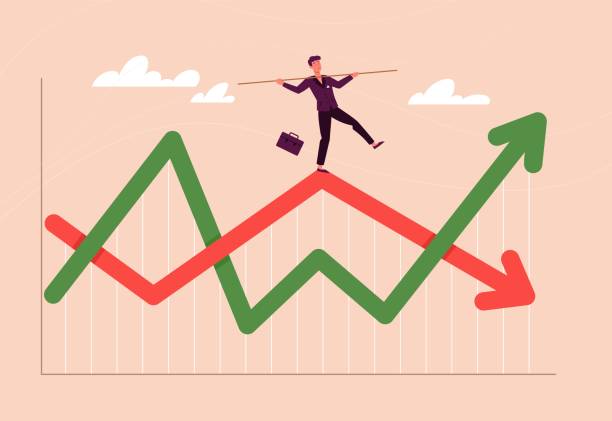“Refinancing Your Home Loan: When Is the Right Time?”
Refinancing your home loan can be a strategic financial move, but timing is key to ensuring you benefit from the process. Here’s a comprehensive guide on when it might be the right time to refinance your home loan:
### **1. **Interest Rates Have Dropped**
– **Lower Rates:** If current interest rates are significantly lower than your existing mortgage rate, refinancing could reduce your monthly payments and save you money over the life of the loan.
– **Rate Comparison:** Monitor market trends and compare current rates to your existing rate. Even a small reduction can lead to substantial savings.
### **2. **You Want to Lower Your Monthly Payments**
– **Budget Adjustment:** Refinancing to a lower interest rate or extending the loan term can reduce your monthly payments, which can be beneficial if you need to improve your cash flow.
– **Payment Analysis:** Use a mortgage calculator to estimate how refinancing will affect your monthly payments and overall financial situation.
### **3. **You Want to Shorten Your Loan Term**
– **Pay Off Sooner:** Refinancing from a 30-year to a 15-year mortgage can help you pay off your loan faster and save on interest costs, though it may increase your monthly payments.
– **Interest Savings:** Shorter loan terms often come with lower interest rates and significant interest savings over the life of the loan.
### **4. **You Need to Access Home Equity**
– **Cash-Out Refinance:** If you need to access funds for major expenses, such as home improvements, education, or debt consolidation, a cash-out refinance allows you to tap into your home’s equity.
– **Evaluate Costs:** Consider the costs associated with a cash-out refinance and ensure the benefits outweigh the expenses.
### **5. **You Want to Switch from an Adjustable-Rate to a Fixed-Rate Mortgage**
– **Stability:** If you have an adjustable-rate mortgage (ARM) and are concerned about future interest rate increases, refinancing to a fixed-rate mortgage can provide stability and predictable payments.
– **Future Planning:** A fixed-rate mortgage can be a good option if you plan to stay in your home long-term and want to lock in a consistent rate.
### **6. **Your Credit Score Has Improved**
– **Better Rates:** If your credit score has improved since you took out your original mortgage, you may qualify for better rates and terms. This can lead to lower monthly payments and overall savings.
– **Credit Review:** Check your credit report and score to determine if refinancing could offer financial advantages based on your improved credit profile.
### **7. **You Want to Eliminate Private Mortgage Insurance (PMI)**
– **Remove PMI:** If you’ve built up enough equity in your home and are paying PMI, refinancing can help you eliminate this additional cost by reaching the required equity threshold.
– **Equity Assessment:** Evaluate your current home value and loan balance to determine if refinancing will help you reach the 20% equity threshold needed to remove PMI.
### **8. **You’re Facing Financial Hardship**
– **Financial Relief:** If you’re experiencing financial difficulties and need to lower your monthly mortgage payments, refinancing might provide temporary relief.
– **Consult a Professional:** Before proceeding, consult with a financial advisor or mortgage professional to understand the implications and potential costs.
### **9. **You’re Considering a Major Life Change**
– **Major Events:** If you’re going through significant life changes such as a job relocation, marriage, or retirement, refinancing might be a strategic move to align your mortgage with your new circumstances.
– **Long-Term Planning:** Consider how refinancing fits into your long-term financial goals and personal situation.
### **10. **Current Loan Terms Are Unfavorable**
– **Review Terms:** If your current mortgage has unfavorable terms, such as high prepayment penalties or restrictive conditions, refinancing might offer more favorable terms and greater flexibility.
– **Cost-Benefit Analysis:** Weigh the costs of refinancing against the potential benefits of improved loan terms.
### **11. **You’re Looking to Consolidate Debt**
– **Debt Consolidation:** If you have high-interest debt, such as credit card balances, refinancing your mortgage can help consolidate this debt at a lower interest rate, potentially reducing your overall debt burden.
– **Assess Impact:** Evaluate the long-term impact on your finances and ensure that consolidating debt through refinancing aligns with your financial goals.
### **12. **You Want to Change Loan Features**
– **Feature Modification:** Refinancing can provide an opportunity to modify loan features, such as adjusting the loan term, changing from an ARM to a fixed-rate mortgage, or adding features like bi-weekly payments.
– **Customization:** Determine how these changes align with your financial goals and preferences.
### **Steps to Take Before Refinancing**
1. **Evaluate Your Current Mortgage:** Review your current loan terms, interest rate, and remaining balance to understand how refinancing might impact you.
2. **Calculate Potential Savings:** Use refinancing calculators to estimate potential savings and assess whether refinancing is financially beneficial.
3. **Shop Around for Lenders:** Obtain quotes from multiple lenders to compare interest rates, fees, and terms.
4. **Consider Costs:** Factor in closing costs, appraisal fees, and other expenses associated with refinancing to ensure that the benefits outweigh the costs.
5. **Consult with a Financial Advisor:** Seek professional advice to determine if refinancing aligns with your overall financial strategy and goals.
In summary, refinancing your home loan can be advantageous if interest rates have dropped, you need to access equity, or you want to change loan terms. Carefully evaluate your financial situation, potential savings, and associated costs to determine if refinancing is the right choice for you.









